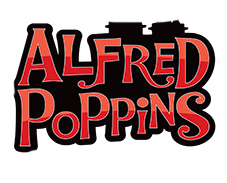UK fire statistics show that each year on average over 30 thousands houses have chimney fires. This will be largely due to not getting the chimney swept often enough or burning fuel that is inappropriate for the appliance and causing tar to build up in the chimney.
Most insurance companies will no longer pay out for claims made due to chimney fires unless the chimney has been swept by a professional chimney sweep and a valid certificate of sweeping issued that is recognised by insurance companies. If the fire brigade is called out to a chimney fire and it is proven that the chimney has not been properly maintained, then the local council can bill you for the call out, which can be expensive!
Chimney fires can not only destroy homes but also endanger the occupiers of the dwelling.
Slow-burning chimney fires don’t get enough air or have enough fuel to be as dramatic or visible as their more spectacular cousins. The temperatures they reach are very high and can cause damage to the chimney structure and nearby combustible parts of the house. Use only recommended fuels for your appliance and flue type (if you are unsure check your manufactures instructions, ask your stove supplier, or a SweepSafe Chimney Sweep).
Chimneys need to allow the free passage of dangerous combustion gases. Regular sweeping will remove soot, bird nests, cobwebs and any other blockages. It also removes creosote, which will help to prevent dangerous chimney fires. Chimney Sweeping will also help to increase the efficiency of appliances. The frequency of Chimney Sweeping will depend on a number of factors which include the type of fuel used, appliance, duration of use, moisture content of wood fuel, and the type of chimney you have. Your local Chimney Sweep will be able to advise on the sweeping frequency during the appointment. The sweeping frequencies below are for guidance purposes only:-
- Smokeless Fuel: At least once a year
- Wood: Quarterly when in use
- Bituminous Coal: Quarterly when in use
- Oil: Once per year
- Gas: Once per year
SweepSafe Chimney Sweeps are very mindful and conscious of making as little mess as possible, and are in fact trained in the prevention of dust escaping during sweeping. Normally Chimney Sweeps will need a clear passage to the chimney and adequate space to work in. They may suggest you clear any ornaments from the hearth and mantelpiece, and perhaps you could clear the grate of any fuel, ash or rubbish etc before the sweep arrives.
Gas and oil flues will also need to be swept. It is essential that all flues are kept clean and clear of debris and vermin nests. It will also help with the prevention of chimney fires and even carbon monoxide poisoning. If you have just moved house, then it is important you have your chimney swept as soon as possible as you may not necessarily know when it was last cleaned properly by a professional Chimney Sweep. Always ensure you receive a Certificate of Chimney Sweeping. Your Chimney Sweep will also provide advice on your Chimney, heating appliances, what fuels to use, and the best practice for fuel storage.
Chimney Sweeps that are Members of SweeSafe undertake an extensive training program and have to successfully complete a full assessment prior to becoming and trading as a SweepSafe Member. All SweepSafe Members must hold valid insurance for Chimney Sweeping, of which they provide a copy of to the Association on an annual basis. They must also have the correct equipment to be able to undertake the job which is checked at the time of their assessment.
SweepSafe Chimney Sweeps are:
- All trained and qualified
- Fully insured
- Issue an Industry Standard Certificate of Chimney Sweeping for every Chimney cleaned
- Follow the Industry Standard Code of Practice
- Able to inspect and survey Chimneys using CCTV equipment
SweepSafe Members are dedicated to Protecting the Consumer

